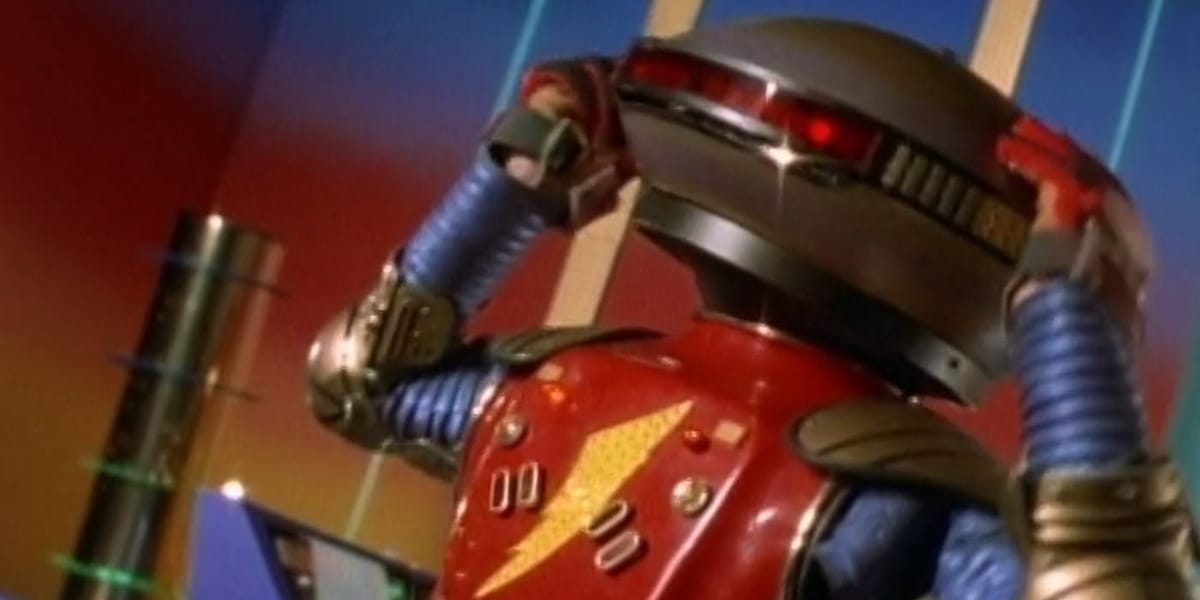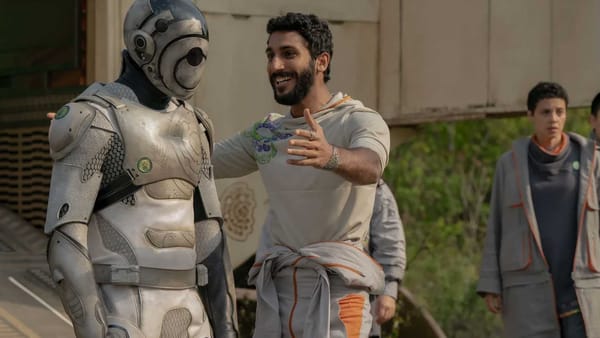🤖 Inneresting #254 - AI-yai-yai
Why did we program these artificial life forms to feel stress?

Daniel Kokotajlo, Eli Lifland, Thomas Larsen, Romeo Dean, and Scott Alexander collaborated on a speculative narrative about what the next several years of advances in AI could look like. Spoiler: one of the plausible endpoints does have AI deciding that it's better to zone more of Earth's surface for data centers than it is to have humans exist.
This write up only looks at the next few years. We're in a time where science-fiction and real life feel uncomfortably similar. John and Craig talk with Max Read about this subject on a recent Scriptnotes, where Max makes a point about the extremes of possible futures, and how to find something plausible in-between:
[F]or example, like Neal Stephenson, who’s a very famous cyberpunk writer, his prediction of a particularly stupid world is, in some ways, more accurate than somebody like William Gibson, who’s, to my mind, an even better writer and even more magisterial on the science-fiction stage. Gibson’s future is dark, and depressing, and kind of cool. Stephenson’s future is, in general, very stupid and doesn’t work in the way it’s supposed to.
I would say, in most ways, my day-to-day resembles the stupid world than it does the cool. I’m not like a cool hacker encountering AIs on the net or whatever. I’m much closer to a pizza delivery guy with a katana, just running into the dumbest guys possible. In general, I think that when I’m trying to write sci-fi or trying to think about predicting the future, even in my job as a journalist, I always try to think, okay, here’s the beautiful future and here’s the most depressing possible, and then triangulate it into what’s the version of this that we’re going to actually get, and it’s the stupid one.
As an example of living the stupid version of the future, Joe Wilkins collects examples of companies walking back their commitment to replacing humans with AI Agents as they realize that AI isn’t fully baked yet.
An example from fiction that matches up pretty well with some speculation from our lead article, Philip K. Dick's short story Second Variety shows a future where self-replicating military AI turn on all of humanity, and we follow a group of soldiers cursing the robots' sudden but inevitable betrayal.
Thinking about the origin of killer robots, it's plausible to depict their origins as an attempt to make a better world. Take this deleted scene from Terminator 2 that highlights how Miles Dyson may be the father of Skynet, but all he wants to do is make the world safer through reliable AI automation:
While the training methods mentioned in AI 2027 are specific to today, the question about how to enforce ethical behavior in autonomous artificial intelligence has been asked since well before such AIs were even close to possible. There's the example of Isaac Asimov's Three Laws of Robotics:
First Law: A robot may not injure a human being or, through inaction, allow a human being to come to harm.
Second Law: A robot must obey orders given it by human beings except where such orders would conflict with the First Law.
Third Law: A robot must protect its own existence as long as such protection does not conflict with the First or Second Law.
Ariel Katz digs in to the need to update Asimov’s laws of robotics for the AI Age to remove ambiguity from decisions that AI would need to make in situations like self-driving cars or how AI can provide useful advice to leaders during an international crisis. Katz also reminds us that the laws of robotics were never meant to be sufficient guardrails for actual intelligent machines, but as an inherently flawed set of principles to create entertaining fiction.
Christoph Salge looks at a different angle, providing AI with a sense of “empowerment,” instead of only constraints. The belief is that AI would recognize that human empowerment is required for AIs to attain their own greatest sense of empowerment. Andrei Mihai suggests the idea of a Morality Turing Test, to gauge whether an artificial intelligence can display a sense of personal ethics indistinguishable from a human's.
Of course, a test for gauging empathy in artificial life is something that may be familiar to fans of science fiction:
👋 Are you new here?
Inneresting is a weekly newsletter about writing and things that are interesting to writers. Subscribe now to get more Inneresting things sent to your inbox.
Previously on Inneresting…
In case you missed it, last issue’s most clicked link, Jason Hellerman digs into JRR Tolkien’s description of worldbuilding as an outgrowth of plot instead of a prerequisite to writing the story.
What else is inneresting?
- Thomas Thorogood looks back on 28 Days Later in anticipation of its threequel.
- Don McHoull on how modified reruns of Family Circus comics create an odd, zombie comic strip.
- Mel from Shot Zero looks at the chain of influence a set of knuckle tattoos can have, moving from Night of the Hunter to Do the Right Thing and showing up again in I’m A Virgo.
And that’s what’s inneresting this week!
Inneresting is edited by Chris Csont, with contributions from readers like you and the entire Quote-Unquote team.
Are you enjoying this newsletter?
📧 Forward it to a friend and suggest they check it out.
🔗 Share a link to this post on social media.
🗣 Have ideas for future topics (or just want to say hello)? Reach out to Chris via email at inneresting@johnaugust.com, Bluesky @ccsont.bsky.social, or Mastodon @ccsont@mastodon.art.




